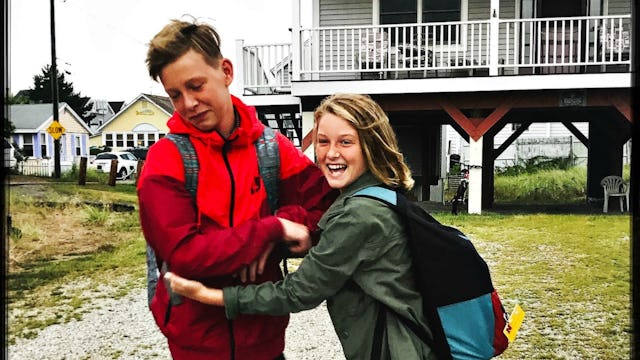Childhood Anxiety Is Real. Here's How Parents Can Help.

Back-to-school has come and gone. Social media feeds were filled with photos of happy, well-dressed kids. Parents and kids alike are proud and excited about new beginnings, fresh starts — it was breathtaking and beautiful.
It can also be bittersweet if your child suffers from anxiety.
This year, we were the lucky ones: excited, smiling, and carefree. Last year, other years — those were different.
Both of my children have struggled with anxiety, triggered by diagnosed autoimmune illnesses. The word “diagnosed” is important because anxiety can be hard to see, hard to explain, and well, just hard.
Tears, stress, no appetite, no laughter. Children with anxiety can seem like they are regressing, acting out, being difficult. To see a previously happy child become hollow is devastating and confusing.
Living with anxiety can feel heavy and unrelenting. In our house, it once presented as an unending, active loop: pacing the floors all night (fighting nausea), stepping outside to gasp for fresh air, then hovering over the toilet (waiting to vomit), becoming fragile, struggling to do basic tasks that were easy and attainable at the age of 5. It was pervasive — no one in our family went unscathed.
The good news: Things can get better!
We’ve tested a few anxiety-managing strategies over the years. Therapy and even medication have helped us through the worst, but on manageable days, self-awareness is key.
When anxiety sneaks up, these questions are where we start:
What are you feeling?
Are you able to express what makes you feel this way? Share what it’s like when you’re at your best. What are some things that can help make you feel that way? What are ways you’re already safe? How have you moved through this before?
As a parent, there’s a fine balance between showing your child that you understand that they are struggling while also helping them to keep moving forward. It’s a tug at your heart, but gently guiding them to keep moving and trying new things each day is the key to moving back toward “normal.” And when we succeed, we celebrate the small victories and are reminded of how good “normal” feels and what our steps were to get there, for next time.
My daughter brought home her first middle school homework assignment of the year — a self-awareness project that would, in turn, help the teachers learn a bit about each child.
“What is a challenge for you?” was the prompt. “I have trouble focusing when I’m around my friends. I have anxiety.”
My breath caught in my throat as I watched her struggle to refine her thoughts. Self-awareness, critical to her health, and far from typical for most 11-year-olds.
“I have anxiety.” She puts pencil to paper and continues.
“It happens most in the morning in homeroom when I’m unsure of how the day will go. Once I’m there I often feel better. When I’m anxious and need you, I will tell you.”
When I suffered through childhood anxiety, I didn’t know that’s what it was, and I certainly wasn’t willing to talk about it.
But her? Simple, powerful, and clear. She’s amazing.
Both of my kids are healthy right now, but anxiety can and does show up at any time, unwanted and unbidden. Seeing both the struggle of living with it, and the ease of being without it, grants us the gift of perspective and appreciation for what “normal” feels like.
As the school year settled in, my daughter has since had chats with the school nurse, taken walks with the school’s therapy dog, and taken advantage of meditation apps that were made available to her.
I’m grateful for the first day smiles that became a fab photo op, but I’m most appreciative of her ability to see herself, behind the smile, and to be clear about her needs.
This article was originally published on